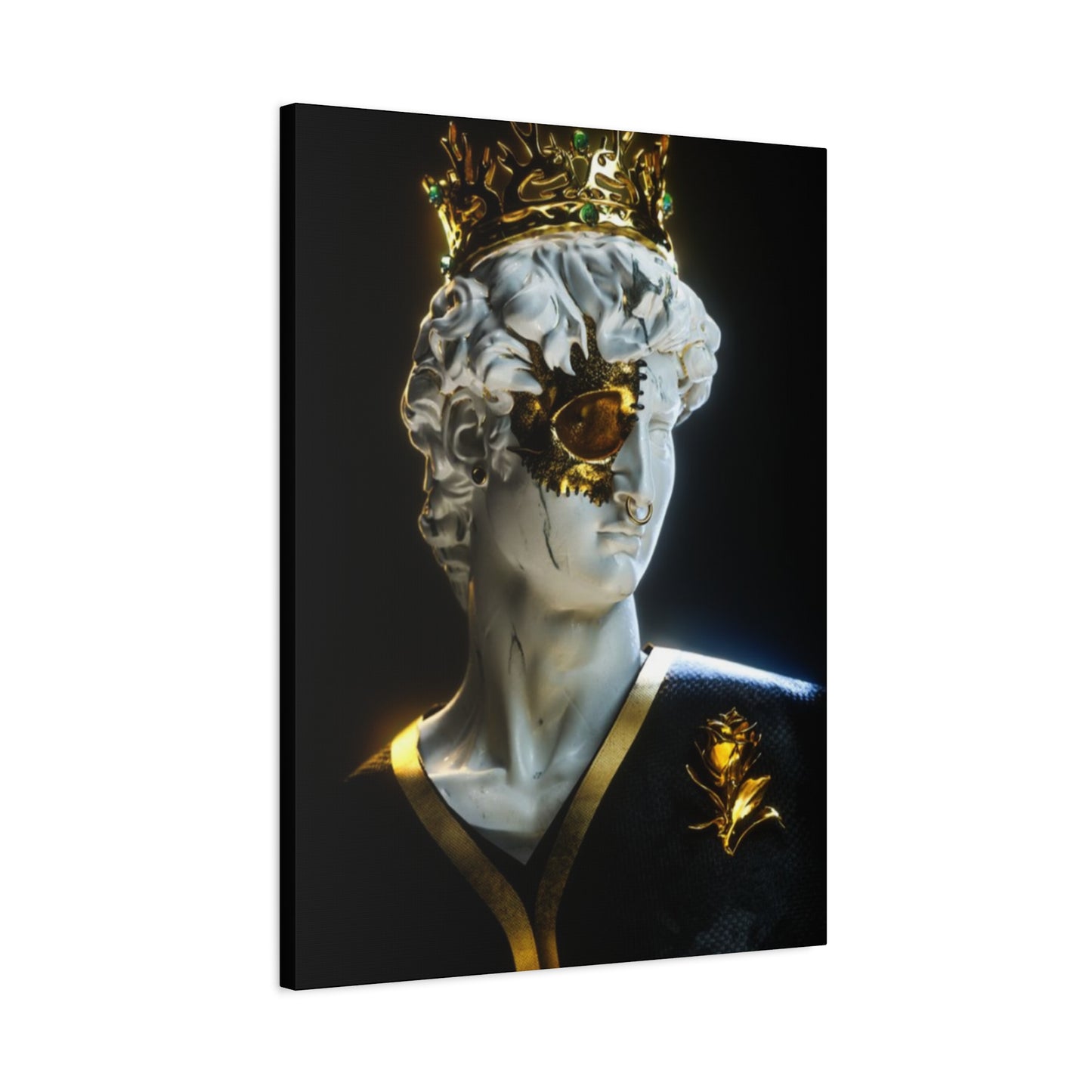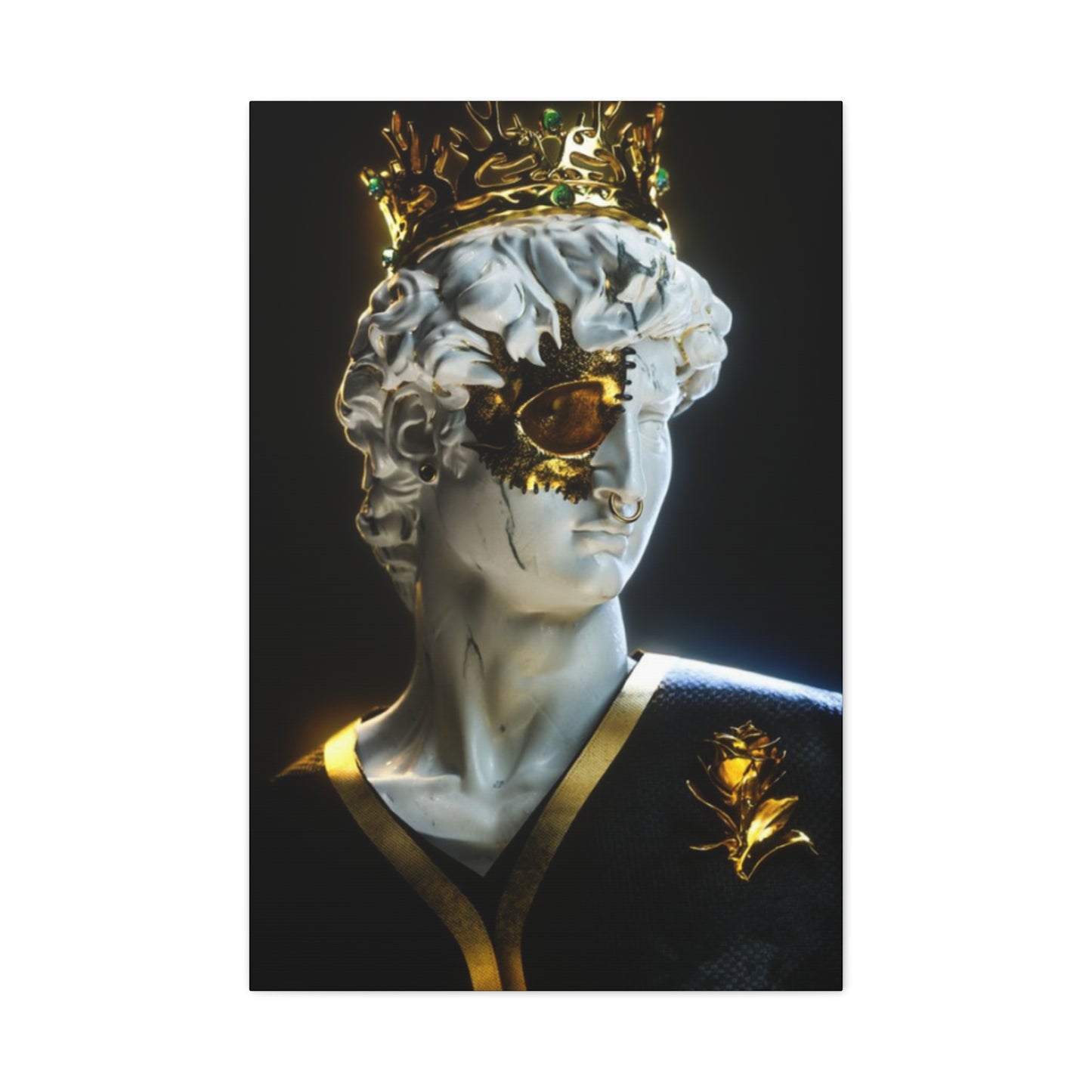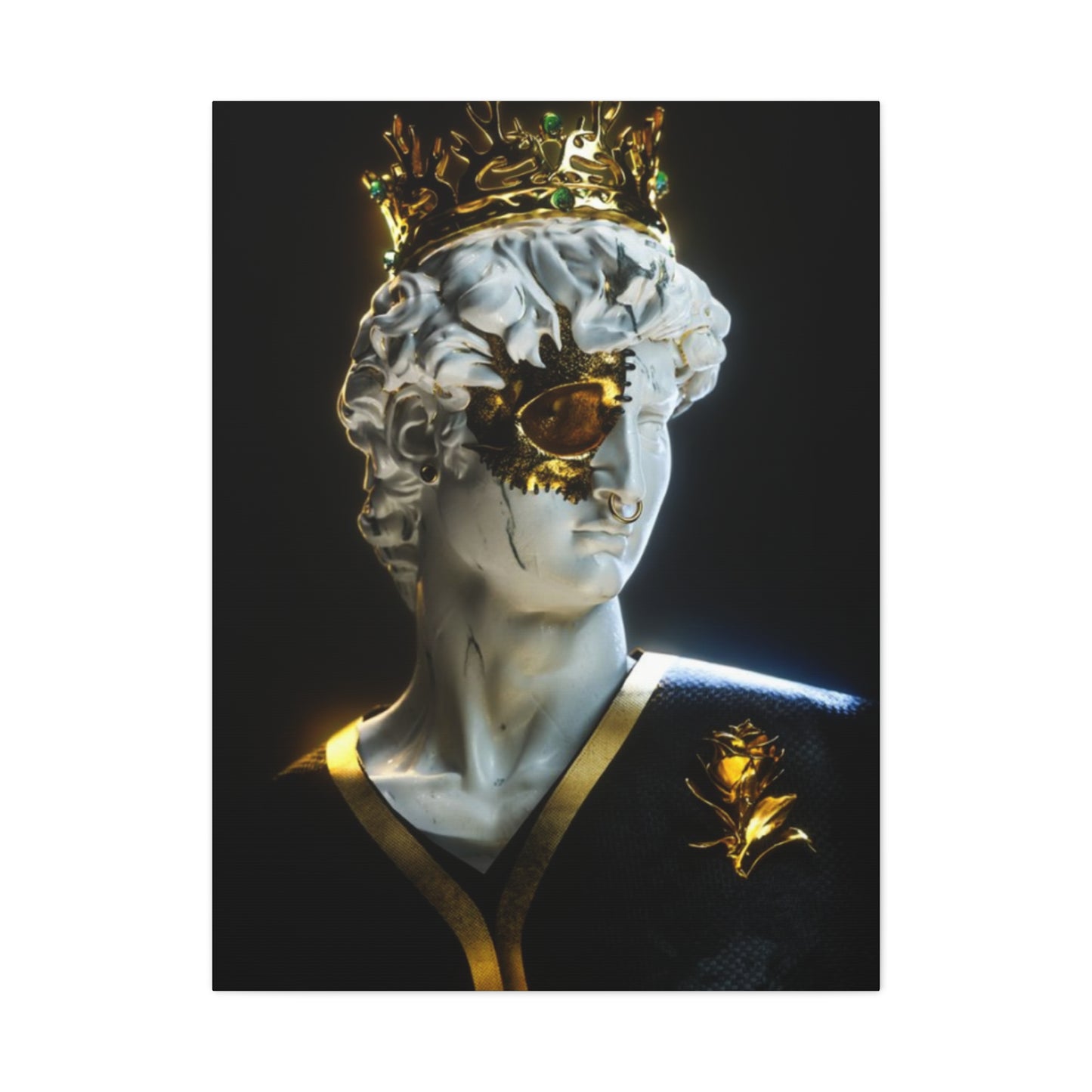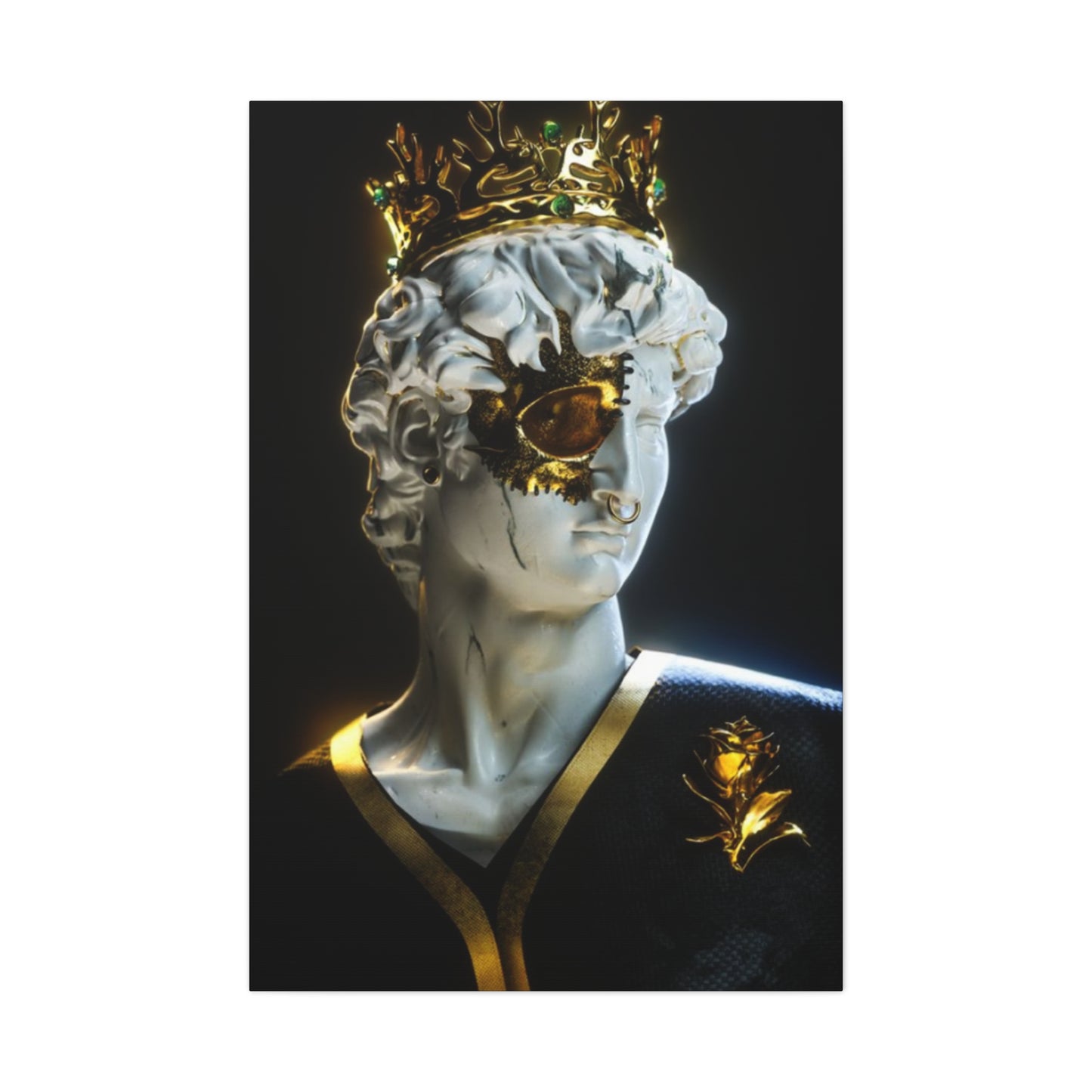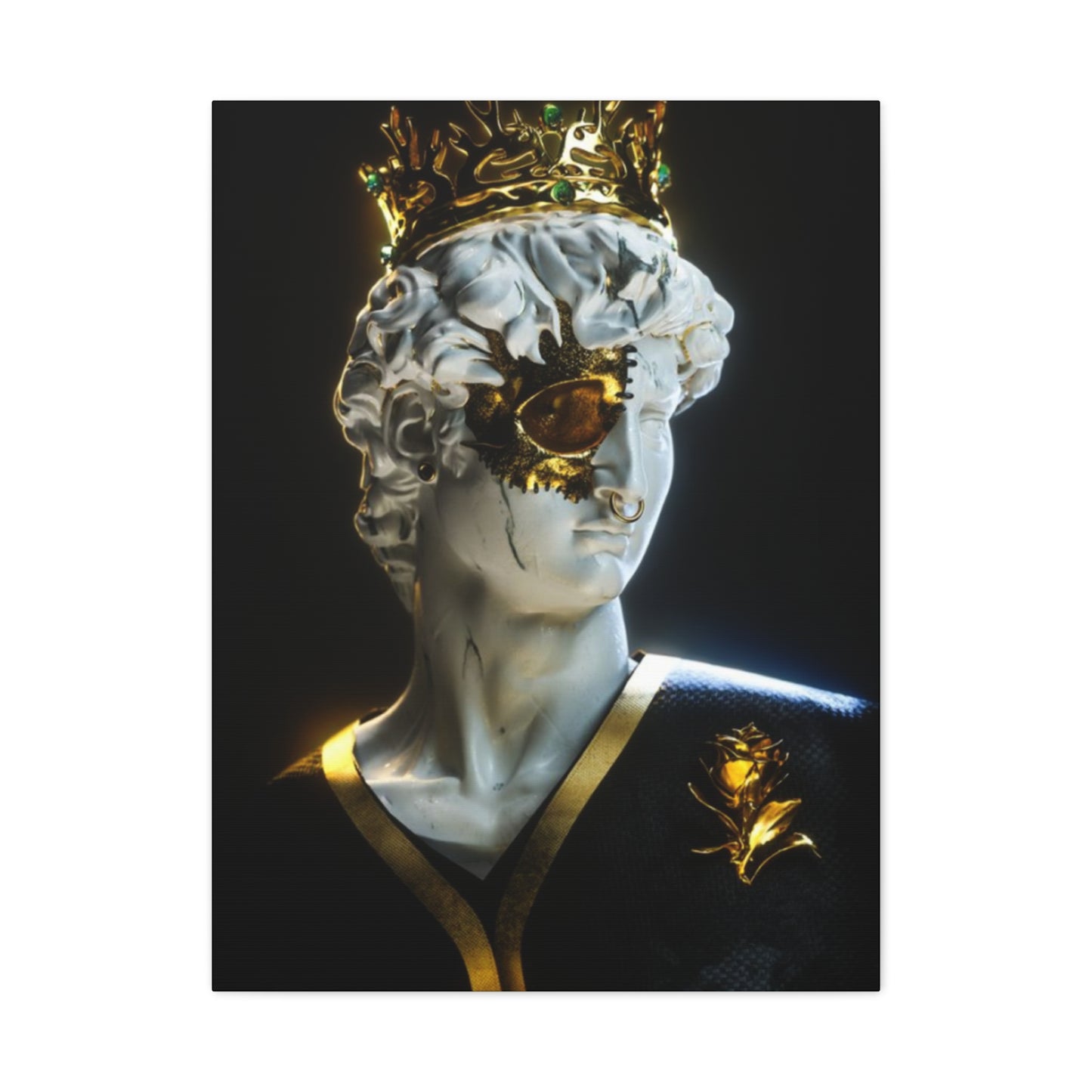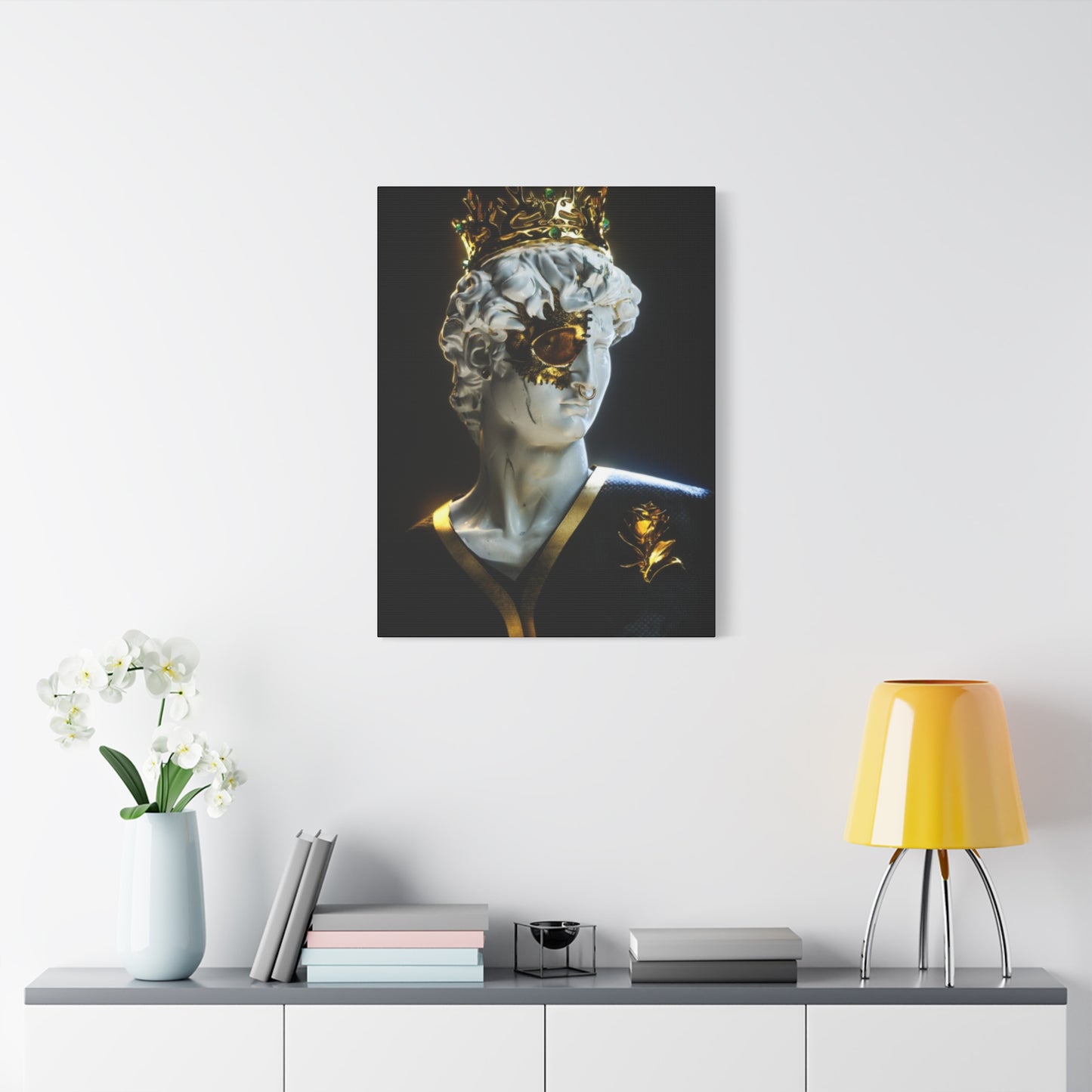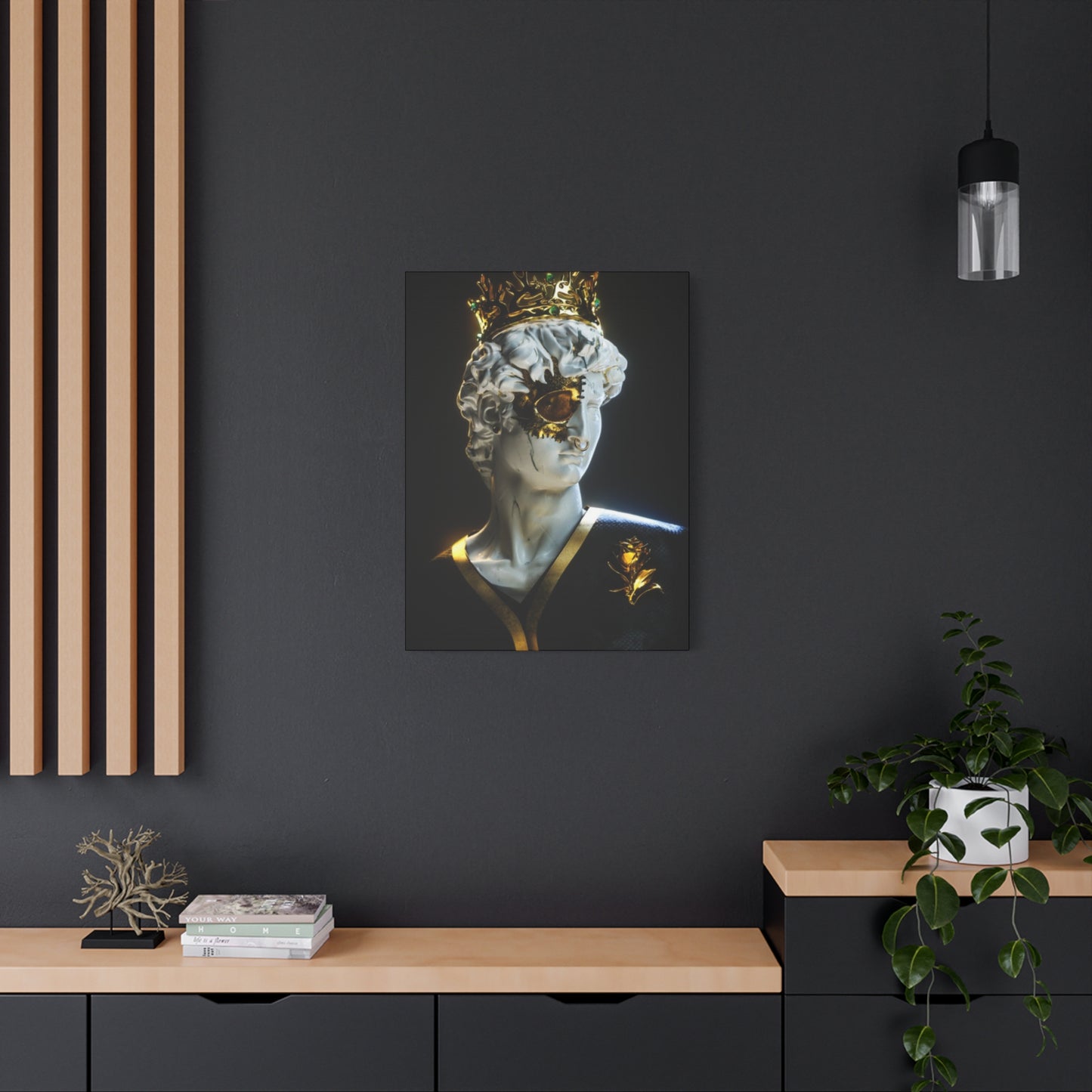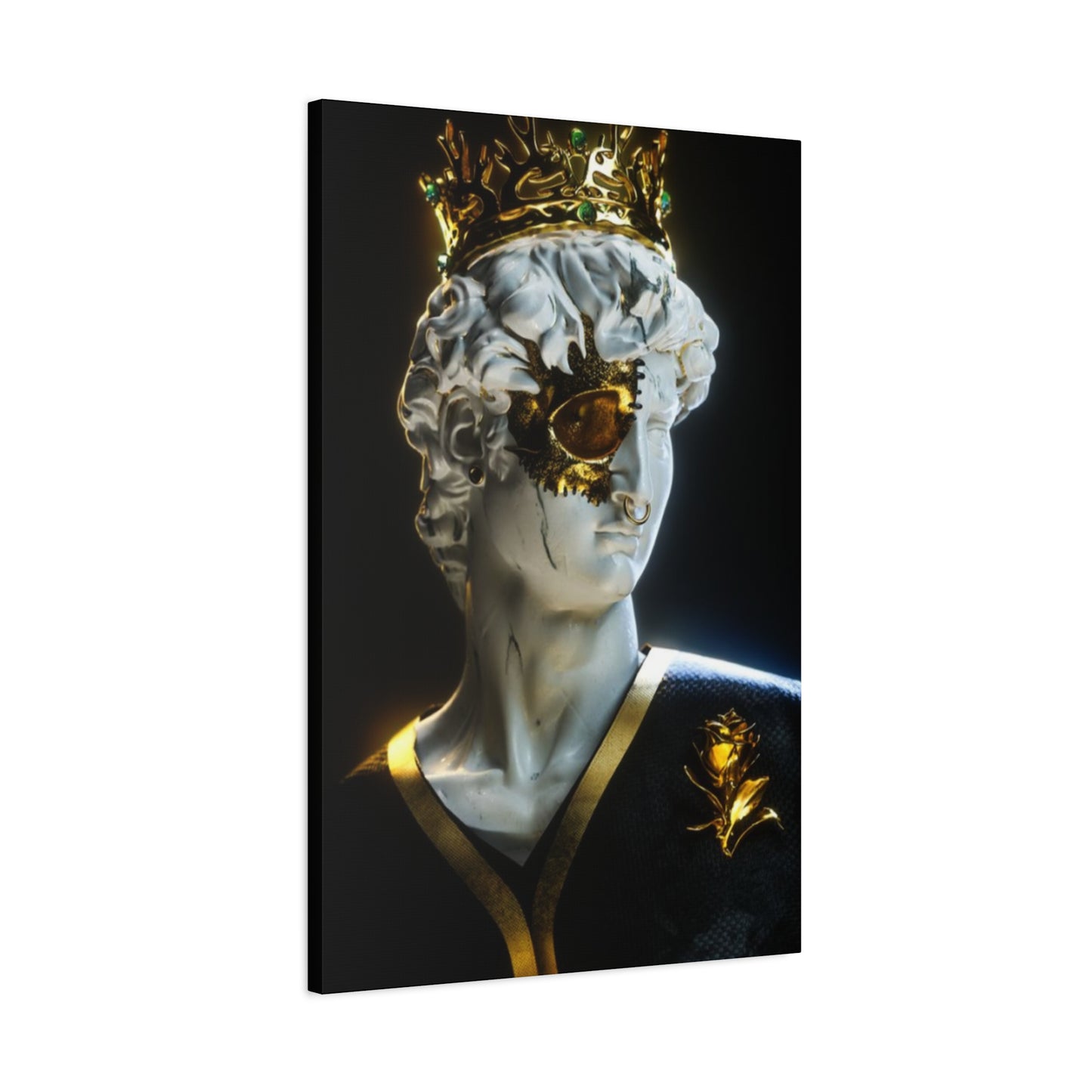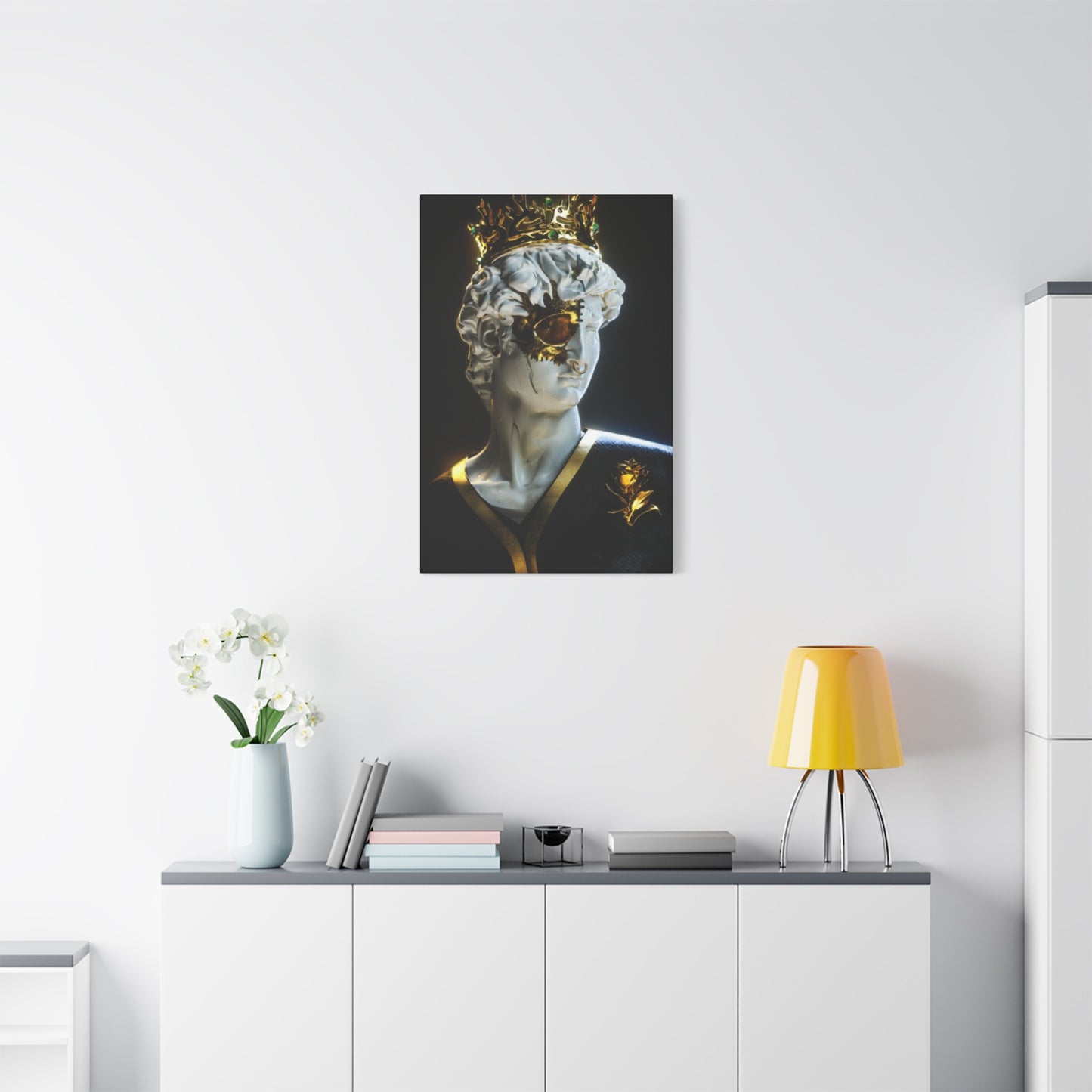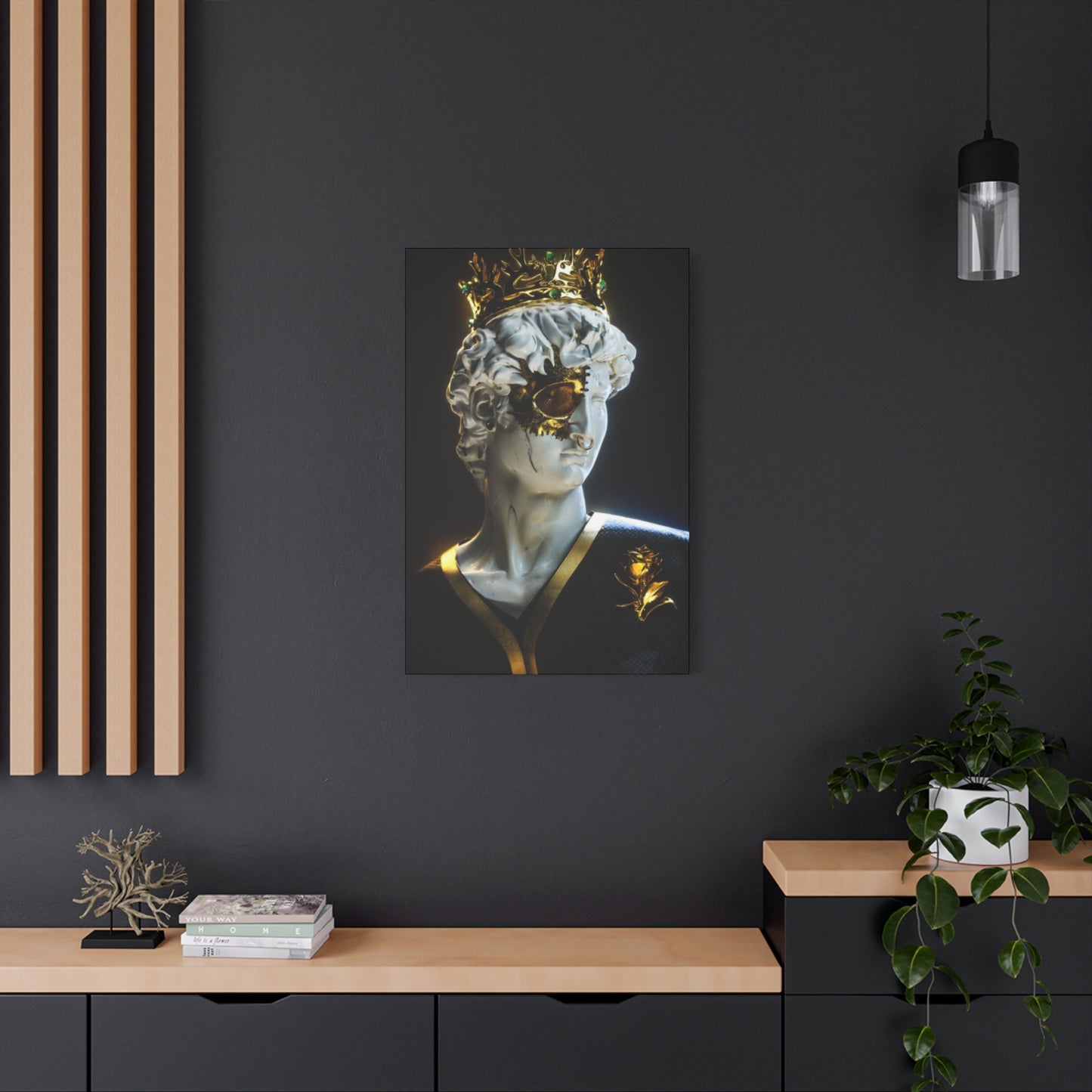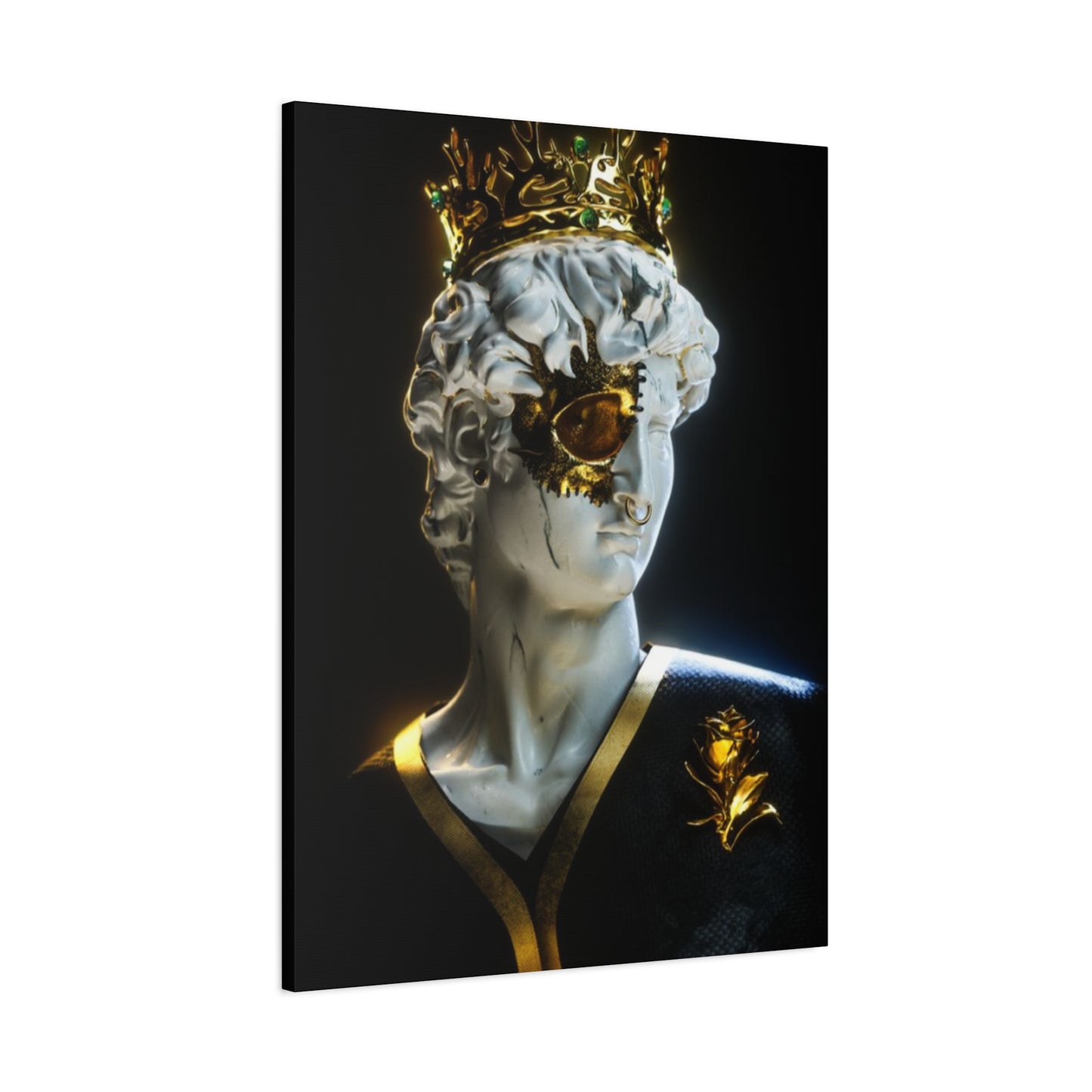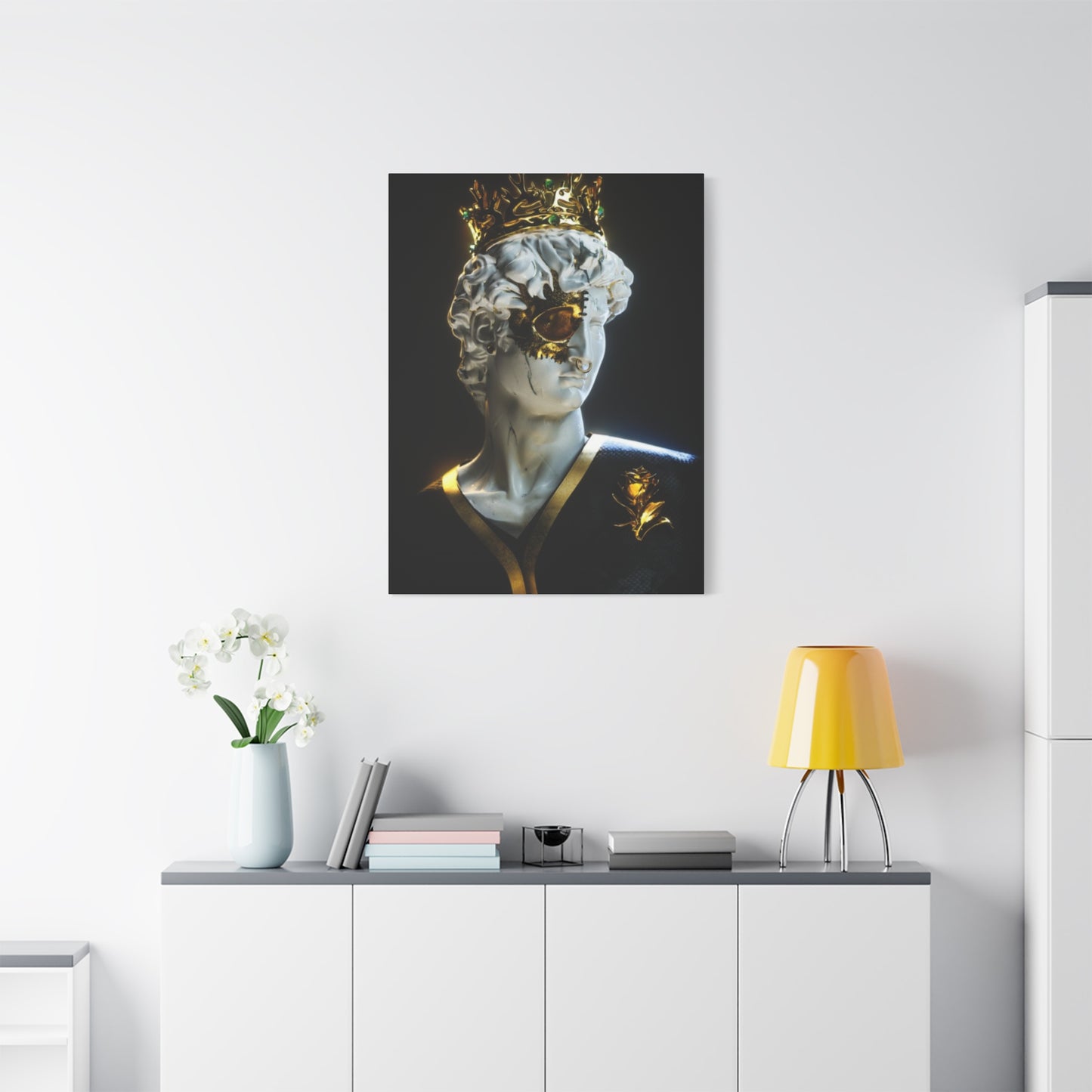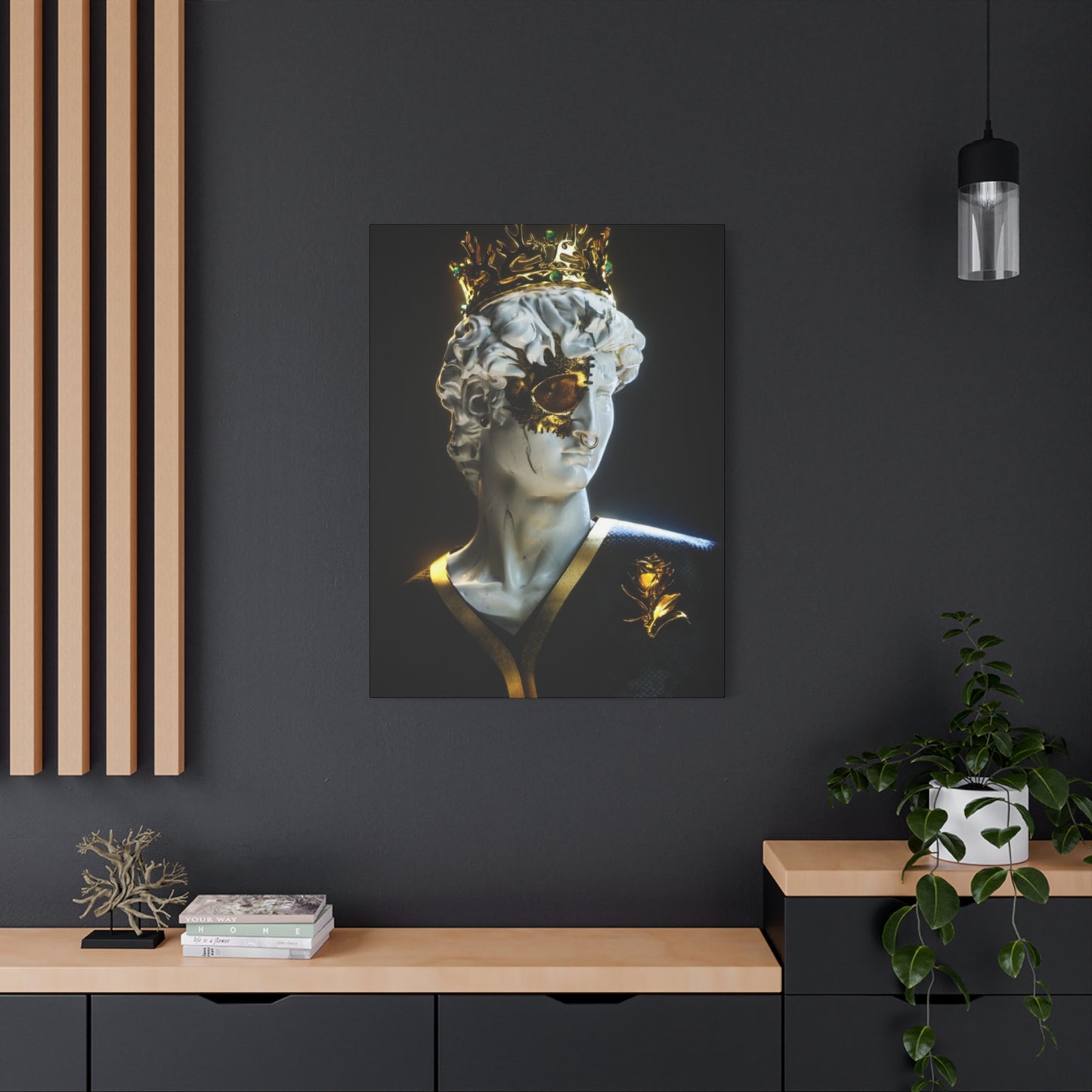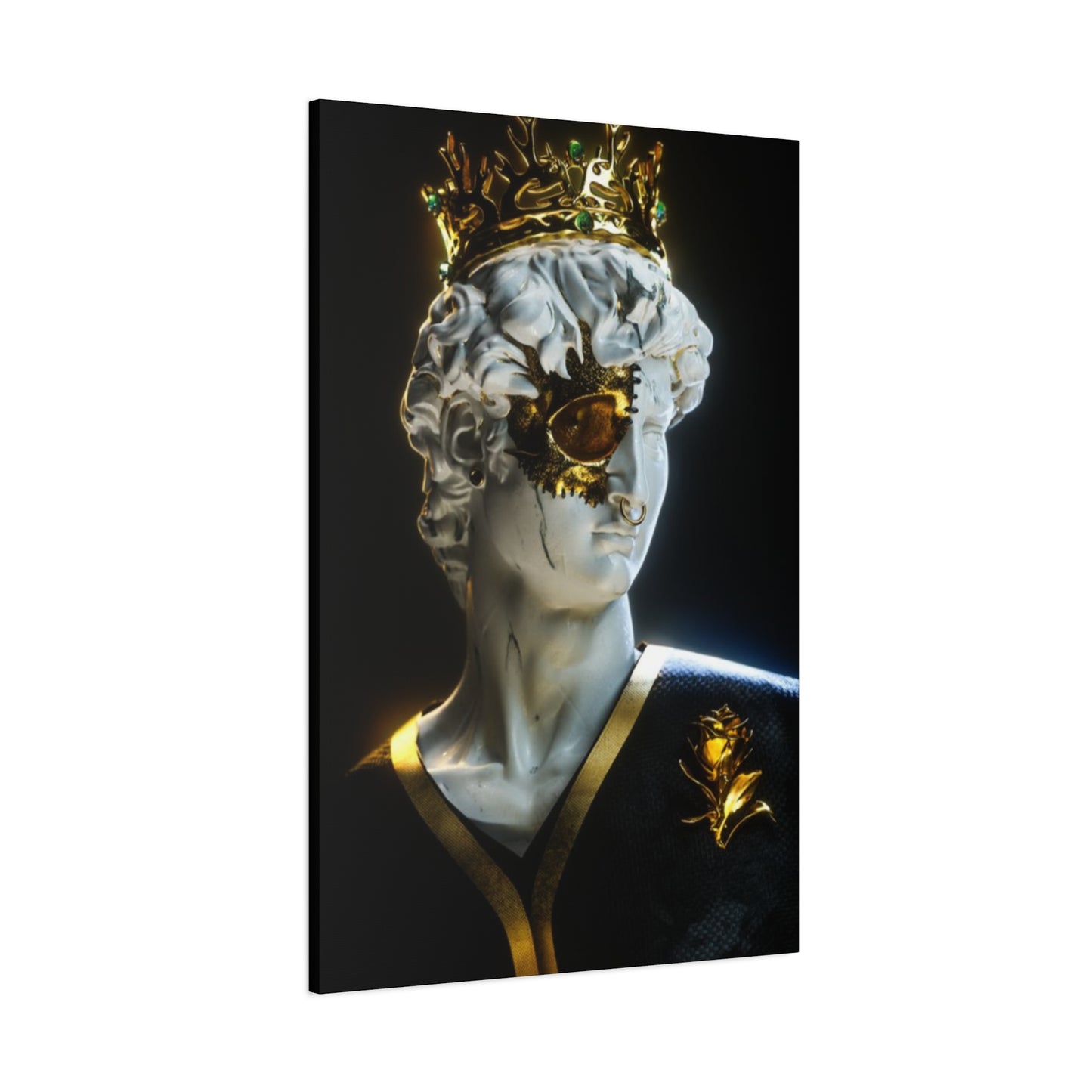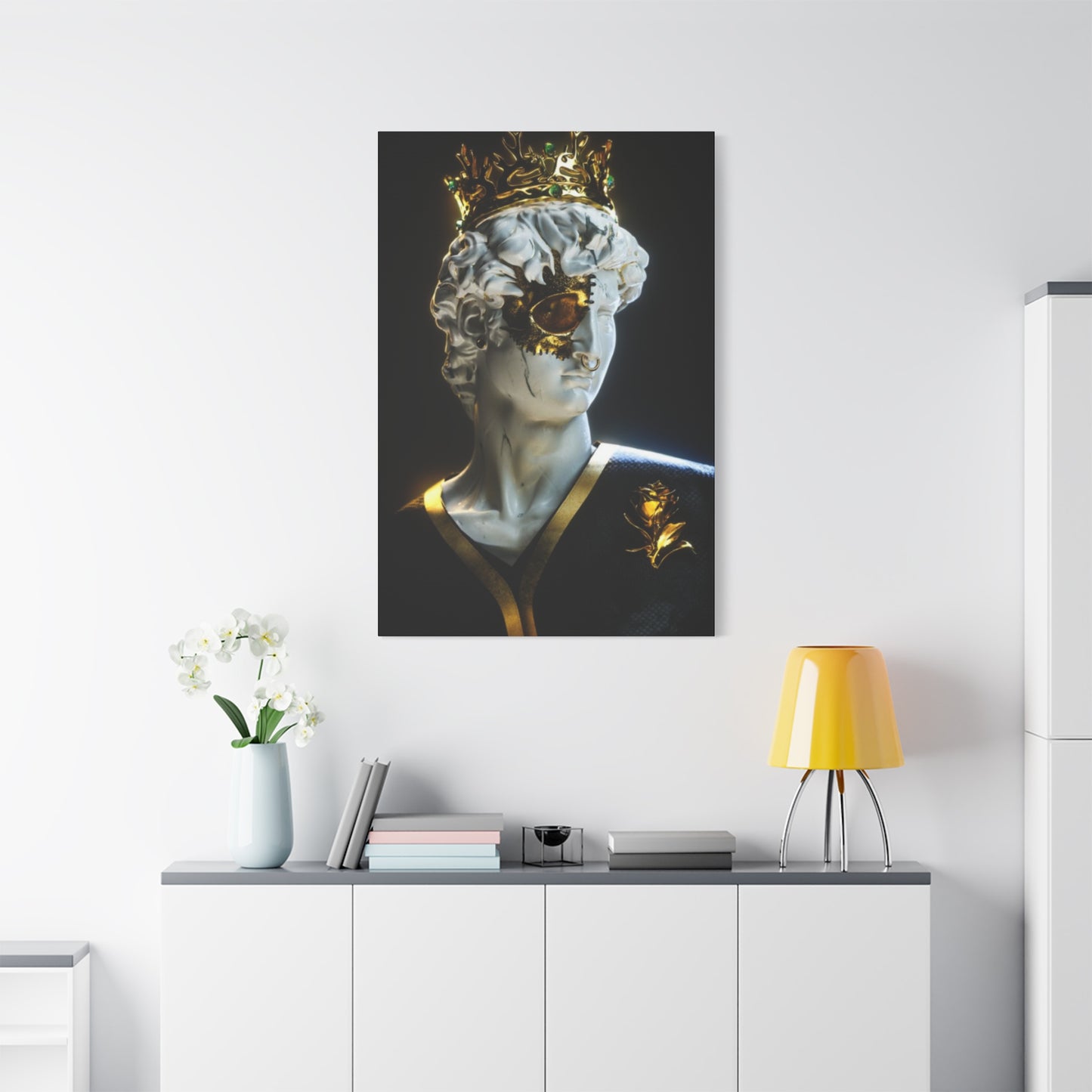Majestic Golden Crown Wall Art: Elevating Your Home with Regal Decorative Elements
Golden crown wall art represents one of the most sophisticated and timeless decorative elements that can transform any living environment into a realm of elegance and grandeur. These magnificent pieces combine the allure of precious metal aesthetics with the powerful symbolism of royalty, creating stunning focal points that captivate viewers and elevate the overall ambiance of any room. The growing popularity of regal-themed decorative elements has made golden crown artwork an increasingly sought-after choice for homeowners, designers, and art enthusiasts who appreciate the blend of luxury and artistic expression.
The appeal of golden crown wall art extends far beyond its visual impact. These pieces serve as conversation starters, cultural symbols, and expressions of personal style that reflect the owner's appreciation for refinement and sophistication. Whether displayed in residential settings, commercial establishments, or cultural venues, golden crown artwork creates an atmosphere of prestige and distinction that few other decorative elements can match.
Modern manufacturing techniques and artistic innovations have made golden crown wall art more accessible than ever before, with options ranging from hand-crafted originals to high-quality reproductions that capture the essence of royal artistry. The versatility of these pieces allows them to complement various design styles, from traditional palatial themes to contemporary minimalist approaches, making them suitable for diverse aesthetic preferences and architectural settings.
The psychological impact of golden crown wall art cannot be understated. The color gold itself is associated with success, prosperity, and achievement, while crown imagery evokes feelings of power, authority, and accomplishment. When combined, these elements create decorative pieces that not only beautify environments but also inspire confidence and ambition in those who encounter them daily.
Symbolism of the Golden Crown in Wall Art
The symbolism embedded within golden crown wall art carries profound meaning that resonates across cultures and throughout history. Crowns have long represented the pinnacle of human achievement, divine authority, and earthly power, making them potent symbols that transcend mere decorative purposes. When rendered in golden hues and displayed as wall art, these symbols take on additional layers of meaning that speak to both conscious and subconscious aspects of human psychology.
In ancient civilizations, crowns were believed to channel divine energy and serve as conduits between earthly rulers and celestial powers. This spiritual dimension continues to influence how people perceive crown imagery today, with many individuals drawn to golden crown wall art as a means of inviting positive energy and success into their environments. The circular nature of most crown designs represents eternity, completion, and the cyclical nature of life, while the upward-pointing elements symbolize aspiration and the human desire to transcend ordinary limitations.
The color gold adds another dimension to crown symbolism, representing not only material wealth but also spiritual illumination and wisdom. In many cultures, gold is considered incorruptible and eternal, qualities that enhance the crown's representation of enduring power and authority. When displayed as wall art, these golden crowns serve as daily reminders of personal potential and the importance of maintaining high standards in all aspects of life.
Cultural interpretations of crown symbolism vary significantly across different societies and historical periods. European traditions often emphasize the crown's connection to monarchy and aristocracy, while Eastern cultures may focus more on the spiritual aspects of crown imagery, particularly its association with enlightenment and higher consciousness. African cultures have their own rich traditions of crown symbolism, often incorporating intricate designs that reflect tribal heritage and ancestral wisdom.
The psychological impact of crown symbolism in wall art extends to concepts of self-empowerment and personal sovereignty. Many people choose golden crown artwork as a means of affirming their own worth and reminding themselves of their inherent dignity and potential. This personal connection to crown imagery can serve as a source of motivation and inspiration, particularly during challenging periods when external validation may be lacking.
Contemporary interpretations of crown symbolism often blend traditional meanings with modern concepts of leadership, creativity, and individual achievement. Artists working with crown motifs frequently explore themes related to personal empowerment, social justice, and the democratization of power, creating pieces that speak to contemporary audiences while maintaining connection to historical precedents.
The placement of golden crown wall art within specific environments can also influence its symbolic interpretation. In professional settings, such artwork may represent ambition and leadership qualities, while in residential environments, it might symbolize the owner's desire to create a personal kingdom or sanctuary. The size, style, and surrounding elements all contribute to how viewers interpret the symbolic message of the artwork.
How to Decorate with Golden Crown Wall Art
Successfully incorporating golden crown wall art into your decorative scheme requires careful consideration of multiple factors, including room size, existing color palette, furniture styles, and overall design objectives. The key to achieving optimal results lies in understanding how these regal pieces interact with their surroundings and learning to balance their commanding presence with other decorative elements.
The first consideration when decorating with golden crown wall art involves determining the appropriate size and scale for your chosen environment. Large statement pieces work best in rooms with high ceilings and generous wall areas, where they can command attention without overwhelming the surrounding elements. Smaller crown artworks are ideal for creating intimate focal points in cozy environments or for incorporating into gallery wall arrangements that tell a cohesive visual story.
Color coordination plays a crucial role in successfully integrating golden crown wall art into existing decorative schemes. The warm tones of gold complement a wide range of color palettes, but certain combinations create particularly striking effects. Deep jewel tones such as emerald green, sapphire blue, and rich burgundy provide elegant backdrops that allow golden elements to shine without competing for attention. Neutral color schemes featuring cream, beige, and soft gray create sophisticated foundations that highlight the luxury aspects of golden crown artwork.
Lighting considerations are essential when displaying golden crown wall art, as proper illumination can dramatically enhance the visual impact of these pieces. Natural light brings out the warm undertones in golden finishes, while strategically placed accent lighting can create dramatic shadows and highlights that emphasize the dimensional aspects of crown imagery. LED spotlights with adjustable beam angles offer versatility in highlighting specific details, while soft ambient lighting creates a more subtle and romantic atmosphere.
The style and period of your furniture and accessories should inform your approach to incorporating golden crown wall art. Traditional and antique furnishings naturally complement crown motifs, creating cohesive environments that celebrate historical design elements. Contemporary furniture can also work beautifully with crown artwork when the pieces share common design principles such as clean lines, geometric forms, or metallic accents.
Creating visual balance requires careful attention to the distribution of visual weight throughout the room. Golden crown wall art typically serves as a strong focal point, so surrounding elements should support rather than compete with this central attraction. This might involve using more subdued colors and simpler forms in adjacent areas, or strategically placing complementary metallic accents that echo the golden tones without overwhelming the primary piece.
Layering techniques can add depth and sophistication to arrangements featuring golden crown wall art. This might involve placing the crown artwork against textured wall treatments, incorporating decorative mirrors that reflect and amplify the golden elements, or adding sculptural objects that reinforce the regal theme without duplicating the crown motif exactly.
The height and placement of golden crown wall art significantly impact its effectiveness as a decorative element. The center of the artwork should typically be positioned at eye level, though this rule can be adjusted based on the specific characteristics of the room and viewing angles. In rooms with standard ceiling heights, this usually means placing the center of the artwork approximately 57 to 60 inches from the floor.
Golden Crown Wall Art for Royalty-Inspired Environments
Creating royalty-inspired environments using golden crown wall art involves embracing the opulence, grandeur, and sophisticated aesthetic choices that characterized historical royal residences. These environments celebrate luxury materials, rich color palettes, and ornate decorative elements that work together to create atmospheres of majesty and refinement. The successful execution of such themes requires understanding the historical context and design principles that made royal environments so compelling and enduring.
The foundation of royalty-inspired decorating lies in the careful selection and coordination of materials that convey wealth and prestige. Golden crown wall art serves as a natural centerpiece for such themes, but the supporting elements must be chosen with equal care to maintain the overall effect. Rich fabrics such as velvet, silk, and brocade provide textural luxury that complements metallic finishes, while deep jewel tones create the sophisticated color palette associated with royal environments.
Furniture selection for royalty-inspired rooms should emphasize quality craftsmanship and timeless design elements. Pieces featuring carved details, inlay work, and luxurious upholstery materials help reinforce the theme while providing functional beauty. The goal is not to create museum-like recreations of historical periods but rather to capture the essence of royal luxury in a way that remains livable and relevant to contemporary lifestyles.
Architectural details play a crucial role in establishing royalty-inspired environments. Crown molding, coffered ceilings, and wainscoting create the structural foundation that supports more elaborate decorative elements. When these architectural features are not naturally present, they can be added through careful renovation or simulated through creative use of paint techniques and decorative trim work.
The layering of decorative elements is essential in achieving the rich, complex visual compositions characteristic of royal environments. This involves combining multiple textures, patterns, and materials in ways that create depth and visual interest without appearing cluttered or overwhelming. Golden crown wall art provides an excellent anchor point for these layered compositions, offering a strong focal element around which other decorative choices can be organized.
Lighting design in royalty-inspired environments should emphasize warmth and drama while providing adequate illumination for daily activities. Chandeliers, wall sconces, and table lamps with ornate designs contribute to the overall aesthetic while serving practical purposes. The interplay between artificial lighting and golden crown artwork can create spectacular effects that change throughout the day and evening hours.
Scale and proportion considerations become particularly important when working with royalty-inspired themes, as these environments traditionally favored generous proportions and bold design statements. Golden crown wall art should be sized appropriately to command attention without appearing lost in grand architectural settings. This might require selecting larger pieces or creating grouped arrangements that achieve the necessary visual impact.
The integration of complementary art forms enhances the effectiveness of royalty-inspired environments featuring golden crown wall art. Tapestries, portraits, and landscape paintings that reflect similar aesthetic values help create cohesive visual narratives that transport viewers into realms of royal splendor. The key is maintaining thematic consistency while avoiding monotonous repetition of identical elements.
Where to Buy Golden Crown Wall Art
The marketplace for golden crown wall art has expanded significantly in recent years, offering consumers a diverse range of purchasing options that cater to different budgets, style preferences, and quality requirements. Understanding the various sources and their respective advantages can help buyers make informed decisions that result in satisfactory purchases and long-term enjoyment of their chosen artwork.
Traditional art galleries remain excellent sources for high-quality golden crown wall art, particularly for those seeking original pieces or limited edition works by established artists. Gallery settings allow buyers to examine artwork in person, assess quality firsthand, and often receive expert guidance from knowledgeable staff members. Many galleries specialize in particular styles or periods, making it possible to find venues that focus specifically on royal themes or metallic artwork.
Online marketplaces have revolutionized the art buying experience by providing access to vast inventories from artists and dealers worldwide. Platforms specializing in art sales offer sophisticated search capabilities that allow buyers to filter results by size, style, price range, and other relevant criteria. The convenience of online shopping must be balanced against the inability to examine pieces physically before purchase, though many reputable sellers provide detailed photographs and return policies that mitigate this concern.
Artisan markets and craft fairs provide opportunities to discover unique golden crown wall art created by local and regional artists. These venues often feature handmade pieces that offer distinctive character and the satisfaction of supporting individual creators. The personal interaction with artists at such events can provide valuable insights into the creative process and the meanings behind specific works.
Custom commissioning represents another avenue for acquiring golden crown wall art that perfectly matches specific requirements and preferences. Working directly with artists or specialized studios allows for complete control over size, style, materials, and design elements. While custom work typically requires longer lead times and higher costs, the resulting pieces offer unmatched personalization and exclusivity.
Interior design showrooms and home decor retailers increasingly stock golden crown wall art as part of their curated collections. These venues often provide the advantage of seeing how artwork looks in styled room settings, making it easier to visualize how pieces might work in specific environments. Professional design staff can offer valuable advice about scale, placement, and coordination with existing decorative elements.
Antique shops and estate sales can yield remarkable finds for collectors seeking authentic vintage pieces or reproductions with genuine age and character. These sources require patience and regular searching, but they can provide access to unique pieces with interesting provenance and distinctive charm that mass-produced items cannot match.
Online auction platforms have democratized access to rare and valuable golden crown artwork that might otherwise be available only through exclusive channels. These platforms require careful research and bidding strategies, but they can provide opportunities to acquire exceptional pieces at competitive prices. The key to success in online auctions is thorough research into the artwork, artist, and market values before participating.
Specialty retailers focusing on royal themes or luxury home decor offer curated selections of golden crown wall art along with complementary decorative items. These retailers often provide expertise in their specialized areas and can offer valuable guidance about coordinating multiple elements to create cohesive design themes.
DIY Golden Crown Wall Art Ideas
Creating your own golden crown wall art offers numerous advantages, including complete creative control, cost savings, and the satisfaction of producing personalized artwork that perfectly matches your vision and requirements. The DIY approach to golden crown wall art encompasses various techniques and skill levels, making it accessible to beginners while offering advanced options for experienced crafters and artists.
Painting techniques provide one of the most straightforward approaches to creating golden crown wall art. Canvas boards or stretched canvases serve as excellent foundations for crown paintings using acrylic or oil paints. Metallic paint formulations specifically designed for artistic applications offer rich golden finishes that capture light beautifully and provide the luxurious appearance associated with precious metals. Layering different shades of gold, from pale champagne tones to deep antique gold, creates depth and visual interest that mimics the complexity of real metallic surfaces.
Mixed media approaches combine painting with other materials and techniques to create textured, dimensional golden crown artwork. This might involve incorporating fabric elements, metallic leaf application, or three-dimensional objects that add physical depth to the composition. Collage techniques using vintage papers, sheet music, or book pages can provide interesting backgrounds that enhance the crown imagery while adding layers of meaning and visual complexity.
Stenciling offers a method for creating precise, professional-looking golden crown designs without requiring advanced drawing skills. Commercial stencils are available in various crown designs, or custom stencils can be created using cardboard or plastic sheets. The stenciling process allows for consistent reproduction of crown motifs across multiple pieces, making it possible to create series or coordinated sets of artwork.
Digital printing and mixed media combination represents a modern approach to DIY golden crown wall art. High-resolution crown images can be printed on various substrates and then enhanced with hand-applied metallic paints, embossing techniques, or dimensional elements. This hybrid approach combines the precision of digital imagery with the personal touch of handcrafted embellishment.
Sculpture and relief work offer three-dimensional approaches to golden crown wall art creation. Materials such as polymer clay, papier-mache, or carved foam can be shaped into crown forms and then finished with metallic paints or leafing techniques. These dimensional pieces create dramatic shadows and highlights that change throughout the day as lighting conditions vary.
Embroidery and textile arts provide unique approaches to golden crown wall art that incorporate rich textural elements. Metallic threads, beads, and sequins can be used to create elaborate crown designs on fabric backgrounds. These textile artworks offer warmth and softness that complement the regal imagery while providing tactile interest that purely painted works cannot achieve.
Transfer techniques allow for the incorporation of existing crown imagery into DIY projects through methods such as image transfers, vinyl decals, or temporary tattoos adapted for artistic purposes. These techniques can be combined with painting, collage, or other methods to create complex compositions that blend found imagery with original creative elements.
Recycling and upcycling approaches transform everyday objects into components for golden crown wall art. Picture frames, mirrors, or decorative objects can be repurposed and enhanced with crown motifs using various techniques. This sustainable approach to art creation often results in unique pieces with interesting histories and character that purely new materials cannot provide.
Incorporating Gold Tones in Wall Decor
The strategic incorporation of gold tones in wall decor creates environments that exude warmth, sophistication, and luxury while providing versatile design solutions that complement various aesthetic approaches. Understanding how gold interacts with different colors, textures, and lighting conditions enables decorators to harness its power effectively while avoiding the potential pitfalls of overuse or inappropriate application.
The psychology of gold in environmental design reveals its profound impact on human perception and emotional response. Gold tones are universally associated with success, prosperity, and achievement, making them particularly effective in environments where confidence and positive energy are desired. The warm undertones of gold create inviting atmospheres that encourage social interaction and comfort, while its reflective properties help amplify available light and create more spacious-feeling environments.
Color theory principles guide the successful integration of gold tones with existing color schemes. Gold's warm nature makes it naturally compatible with other warm colors such as deep reds, rich oranges, and earthy browns, creating cohesive palettes that feel harmonious and inviting. However, gold also creates striking contrasts when paired with cool colors such as deep blues, emerald greens, or rich purples, resulting in more dramatic and sophisticated color relationships.
Texture considerations play crucial roles in how gold tones appear and function within decorative schemes. Matte gold finishes offer subtle elegance that integrates easily into various design styles, while high-gloss metallic finishes create more dramatic focal points that command attention. Textured gold surfaces, such as those achieved through leafing techniques or specialized paint applications, provide visual interest and depth that flat finishes cannot achieve.
Proportion and distribution strategies ensure that gold tones enhance rather than overwhelm decorative environments. The 60-30-10 rule provides a useful framework for incorporating gold as either a dominant, secondary, or accent color depending on the desired effect. Used as an accent color, gold provides sophisticated touches that elevate overall design quality without dominating the visual composition.
Lighting interaction represents one of the most important considerations when incorporating gold tones into wall decor. Natural light brings out the warm undertones in gold finishes and creates subtle variations throughout the day that add dynamic interest to environments. Artificial lighting choices significantly impact how gold appears, with warm white LED fixtures enhancing golden tones while cool white lights can make gold appear harsh or brassy.
Seasonal considerations influence how gold tones function within decorative schemes throughout the year. Gold naturally complements autumn color palettes and creates cozy atmospheres during cooler months, but it can also provide warmth and richness that balance cooler summer decorating schemes. Understanding these seasonal relationships helps decorators create environments that feel appropriate and comfortable year-round.
Cultural associations with gold vary significantly across different societies and can influence how gold tones are perceived and utilized in decorative contexts. Western cultures often associate gold with luxury and material success, while Eastern cultures may emphasize its spiritual and philosophical meanings. Understanding these cultural dimensions can inform decorating choices and help create environments that resonate with intended audiences.
Material selection expands the possibilities for incorporating gold tones beyond traditional metallic finishes. Gold-toned fabrics, wallpapers, ceramic tiles, and decorative objects all contribute to golden color schemes while providing textural variety and visual interest. The key is maintaining consistency in undertones while varying textures and applications to avoid monotonous effects.
The History Behind Crown Imagery in Art
The historical evolution of crown imagery in artistic expression reveals a rich tapestry of cultural significance, political symbolism, and aesthetic development that spans millennia and crosses cultural boundaries. Understanding this historical context provides valuable insights into why crown motifs continue to resonate with contemporary audiences and how their meanings have adapted to changing social and political landscapes.
Ancient civilizations established many of the foundational associations between crowns and divine authority that continue to influence artistic interpretations today. Egyptian pharaonic crowns combined practical headwear with symbolic representations of divine power, incorporating elements such as serpents, birds, and precious materials that conveyed specific religious and political messages. These early crown designs established visual vocabularies that artists continue to reference and reinterpret in contemporary works.
Greek and Roman contributions to crown imagery emphasized the connection between earthly achievement and divine favor. Laurel wreaths symbolized victory and honor, while more elaborate ceremonial crowns represented political authority and social status. The artistic representations of these crowns in sculpture, painting, and decorative arts established aesthetic principles that influenced European art for centuries to come.
Medieval period crown imagery reflected the fusion of Christian symbolism with temporal power, creating complex iconographic systems that communicated sophisticated theological and political concepts. Gothic art particularly excelled in depicting crowns as symbols of both earthly kingship and heavenly authority, often incorporating architectural elements and precious stone motifs that referenced both palace and cathedral imagery.
Renaissance artists revolutionized crown imagery by combining classical references with innovative techniques and humanistic perspectives. The period's emphasis on individual achievement and artistic excellence led to crown depictions that celebrated both royal subjects and the artistic skills required to render precious materials convincingly. This period established many of the technical approaches to depicting metallic surfaces and precious stones that continue to influence artists today.
Baroque and Rococo periods elevated crown imagery to new levels of ornate complexity and dramatic presentation. Artists of these eras specialized in creating crown depictions that dazzled viewers with their technical virtuosity and symbolic richness. The period's emphasis on grandeur and theatrical effect established aesthetic principles that continue to influence contemporary interpretations of royal themes.
Colonial and post-colonial periods witnessed significant reinterpretations of crown imagery as artists grappled with changing political realities and cultural identities. Some artists maintained traditional approaches to royal symbolism, while others subverted or challenged these conventions to express new political and social perspectives. These historical tensions continue to inform contemporary artistic approaches to crown imagery.
Modern and contemporary artists have approached crown imagery with unprecedented freedom and creativity, often using traditional royal symbols to explore themes of power, identity, and social justice. Artists such as Jean-Michel Basquiat famously incorporated crown motifs into works that examined race, class, and cultural identity, demonstrating how historical symbols can be recontextualized to address contemporary concerns.
Digital age developments have democratized both the creation and distribution of crown imagery, allowing artists worldwide to reference and reinterpret royal symbols without traditional institutional constraints. This accessibility has led to explosion of diverse approaches to crown imagery that reflect global perspectives and contemporary concerns while maintaining connections to historical traditions.
Contemporary museum and gallery exhibitions increasingly examine the historical development of crown imagery and its continued relevance in contemporary artistic practice. These scholarly approaches provide valuable contexts for understanding how crown symbols function in different cultural and temporal settings, helping contemporary viewers appreciate both historical significance and modern innovations.
Golden Crown Wall Art for Office Settings
Professional environments present unique opportunities and challenges for incorporating golden crown wall art, requiring careful consideration of workplace culture, industry norms, and the psychological impact of regal symbolism on employee morale and client perceptions. When executed thoughtfully, golden crown artwork can enhance professional atmospheres by conveying success, ambition, and quality standards while avoiding potential negative associations with ostentation or inappropriate hierarchy emphasis.
The psychology of golden crown imagery in workplace settings can produce powerful positive effects when properly implemented. Crown symbolism naturally associates with leadership, achievement, and excellence, qualities that most businesses want to project both internally and externally. For employees, daily exposure to symbols of success and aspiration can serve as subtle motivational influences that encourage higher performance standards and professional growth ambitions.
Industry considerations significantly influence the appropriateness and effectiveness of golden crown wall art in professional settings. Creative industries, luxury goods companies, and service businesses targeting affluent clients often find crown imagery particularly compatible with their brand positioning and client expectations. Conservative industries such as finance or law might require more subtle approaches that incorporate crown elements into sophisticated abstract compositions rather than literal representations.
Scale and placement strategies for office environments must balance visual impact with professional appropriateness. Large statement pieces work well in reception areas, executive offices, or conference rooms where impressive artwork can enhance the company's professional image. Smaller crown artworks are suitable for individual offices or common areas where they provide visual interest without overwhelming the functional requirements of work environments.
Color coordination in professional settings typically favors more subdued approaches that complement neutral office color schemes while providing sophisticated accent elements. Golden crown artwork with muted backgrounds or integrated into broader artistic compositions often works better than bright, attention-grabbing pieces that might be considered distracting in work environments. The goal is to enhance rather than disrupt the professional atmosphere.
Client perception considerations are crucial when selecting golden crown wall art for areas where customers or business partners will be present. The artwork should convey quality and success without appearing ostentatious or potentially alienating to clients from different cultural backgrounds or economic circumstances. Subtle, sophisticated approaches to crown imagery often prove more universally appealing than overtly luxurious presentations.
Employee response to workplace artwork can vary significantly based on company culture and individual preferences. Golden crown art that emphasizes themes of collective achievement and organizational success generally receives more positive responses than pieces that appear to celebrate individual hierarchy or exclusive privilege. The key is selecting artwork that inspires rather than intimidates or creates uncomfortable associations with workplace dynamics.
Lighting considerations for office crown artwork require balancing aesthetic impact with practical workplace illumination needs. Professional environments typically utilize cooler lighting temperatures that may affect how golden tones appear, requiring careful selection of artwork finishes and possible adjustment of accent lighting to maintain desired visual effects. The interplay between natural office lighting and artificial illumination throughout the day should be considered when planning artwork placement.
Budget considerations for office artwork must account for both initial purchase costs and long-term value retention. High-quality golden crown wall art can serve as both decorative elements and appreciating assets that contribute to overall business value. However, budget constraints might favor high-quality reproductions or commissioned pieces from emerging artists over expensive originals from established names.
Mixing Modern and Classic Styles with Crown Art
The successful integration of golden crown wall art into design schemes that blend modern and classic elements requires understanding how traditional royal symbolism can enhance contemporary aesthetics without creating jarring stylistic conflicts. This approach to decorating celebrates both historical artistic traditions and current design innovations, creating environments that feel both timeless and current.
Transitional design principles provide excellent frameworks for incorporating crown artwork into mixed-style environments. These approaches emphasize common elements such as proportion, color harmony, and material quality while allowing for stylistic diversity that keeps interiors from appearing too uniform or predictable. Crown art can serve as bridge elements that connect different historical periods and design philosophies within single environments.
Material coordination strategies help unify mixed-style environments featuring golden crown artwork. Modern materials such as stainless steel, glass, and concrete can complement traditional crown imagery when they share similar color temperatures or reflective properties. The key is identifying common characteristics that create visual connections between disparate stylistic elements.
Proportion and scale considerations become particularly important when mixing stylistic periods, as different eras emphasized different dimensional relationships and visual hierarchies. Golden crown artwork sized appropriately for modern environments may need to be balanced with classic elements that operate at different scales, requiring careful attention to how various components relate to each other and to architectural features.
Color palette development for mixed-style environments should emphasize neutral foundations that allow both modern and classic elements to coexist comfortably. Golden tones naturally work well in such schemes because they complement both warm and cool colors while adding luxurious touches that enhance overall sophistication levels. The challenge lies in avoiding color combinations that appear chaotic or unintentional.
Furniture selection strategies must balance modern functionality with classic aesthetic appeal while providing appropriate backdrops for golden crown artwork. Contemporary pieces with clean lines can provide excellent contrasts to ornate crown imagery, while classic furniture pieces can echo the traditional aspects of royal symbolism. The goal is creating dialogue between different stylistic elements rather than competition for attention.
Technological integration presents unique opportunities in mixed-style environments featuring crown artwork. Modern lighting systems can dramatically enhance the visual impact of golden elements while providing practical illumination solutions. Smart home technologies can be integrated discretely to avoid disrupting classic aesthetic elements while providing contemporary convenience and functionality.
Textural layering techniques help unify mixed-style environments by creating common sensory experiences that transcend stylistic differences. Golden crown artwork provides excellent starting points for textural themes that can be echoed through fabric choices, surface treatments, and decorative objects that bridge modern and classic aesthetics.
Architectural considerations influence how successfully mixed-style approaches work in specific environments. Period architecture may naturally accommodate classic elements while requiring more careful integration of modern components. Contemporary architectural settings might need additional classic elements to balance modern crown artwork interpretations and create cohesive overall effects.
Seasonal adaptation strategies ensure that mixed-style environments remain appealing throughout the year. Golden crown artwork provides consistent anchor points around which seasonal decorative changes can be organized, allowing environments to evolve with changing preferences and occasions while maintaining their fundamental character and appeal.
Golden Crown Wall Art as a Statement Piece
Utilizing golden crown wall art as a statement piece requires understanding how these powerful visual elements can anchor entire decorative schemes while commanding attention and establishing the overall character of living environments. Statement pieces function as focal points that organize visual hierarchies and provide starting points for coordinating all other decorative decisions within rooms or larger architectural settings.
The psychological impact of statement crown artwork extends beyond mere visual appeal to influence how occupants and visitors perceive and interact with environments. Large-scale crown pieces create immediate impressions of luxury and sophistication while establishing expectations about the quality and character of everything else in the room. This psychological anchoring effect can elevate the perceived value of entire decorative schemes.
Size and scale considerations for statement crown artwork require careful evaluation of architectural proportions and viewing distances. Pieces intended as statement elements must be substantial enough to command attention from various positions within rooms while maintaining appropriate relationships to furniture, ceiling heights, and other architectural features. Under-scaled artwork fails to achieve statement status, while over-scaled pieces can overwhelm environments and create uncomfortable spatial relationships.
Placement strategies for statement crown artwork involve understanding optimal viewing angles, lighting conditions, and traffic patterns within rooms. Prime locations typically offer unobstructed sight lines from main seating areas while taking advantage of natural or artificial lighting that enhances the golden elements. The placement should also consider how the artwork interacts with other room elements throughout daily use patterns.
Supporting element coordination becomes crucial when golden crown artwork serves as a statement piece. All other decorative choices should complement rather than compete with the primary artwork, requiring careful selection of colors, textures, and forms that enhance the crown piece without diminishing its impact. This supporting role requires discipline and restraint in decorative decision-making.
Color scheme development around statement crown artwork typically involves extracting key colors from the artwork and using them as foundations for broader decorative palettes. The golden elements naturally suggest warm color families, but the specific hues and saturations within individual pieces should guide more detailed color selections for fabrics, paint colors, and decorative accessories.
Lighting design for statement crown artwork requires sophisticated approaches that enhance the artwork's visual impact throughout different times of day and usage scenarios. Multiple lighting sources may be necessary to prevent flat or harsh illumination while creating dramatic effects that emphasize the dimensional and reflective qualities of golden surfaces.
Budget allocation for statement pieces often represents significant decorative investments that require careful consideration of long-term satisfaction and value retention. High-quality statement artwork can serve rooms for decades while potentially appreciating in value, justifying higher initial costs compared to decorative elements that may be changed more frequently.
Maintenance considerations for statement crown artwork include regular cleaning procedures that preserve golden finishes and protect against environmental damage. Dust accumulation, UV exposure, and humidity fluctuations can all affect the appearance and longevity of metallic finishes, requiring preventive care strategies that maintain the artwork's statement-making impact over time.
Using Crown Wall Art in Kids' Rooms
Incorporating crown wall art into children's bedroom and play environments offers unique opportunities to inspire imagination, encourage positive self-image, and create magical atmospheres that support healthy development and creative play. The challenge lies in adapting regal imagery to age-appropriate presentations that avoid overwhelming young sensibilities while maintaining the inspirational qualities that make crown symbolism appealing.
Age-appropriate design considerations must account for different developmental stages and how children perceive and interact with their environments. Younger children respond well to simplified crown designs with bright colors and playful interpretations, while older children may appreciate more sophisticated approaches that acknowledge their growing maturity and developing aesthetic preferences. The goal is creating artwork that grows with children rather than becoming quickly outdated.
Safety considerations for children's artwork include ensuring secure mounting systems that prevent pieces from falling, avoiding sharp edges or protruding elements that could cause injury, and selecting materials that do not emit harmful chemicals or pose other health risks. Child-safe paints and finishes are essential when selecting or creating crown artwork for young people's environments.
Gender-neutral approaches to crown artwork help create inclusive environments that celebrate achievement and aspiration without reinforcing limiting stereotypes. Contemporary interpretations of crown imagery can emphasize universal themes such as creativity, leadership, and personal growth rather than traditional gender-specific associations with princesses or kings. This inclusive approach supports all children's self-development and confidence building.
Educational opportunities arise naturally from crown artwork that incorporates historical, cultural, or geographical themes. Crowns from different cultures and time periods can spark curiosity about world history and diverse traditions, while artistic techniques used in crown depictions can introduce concepts about color, shape, and composition. These learning opportunities transform decorative elements into valuable educational resources.
Interactive possibilities expand when crown artwork incorporates elements that children can manipulate or personalize. Magnetic components, removable elements, or surfaces that accept temporary decorations allow children to participate actively in their room's appearance while developing creative skills and personal ownership of their environments. These interactive features must be designed with safety and durability in mind.
Color psychology applications in children's crown artwork should consider how different hues affect mood, energy levels, and sleep patterns. While golden tones generally create warm and inspiring atmospheres, they should be balanced with calming colors that support rest and relaxation when needed. Understanding these psychological effects helps parents create environments that support various daily activities and emotional needs.
Scale and proportion guidelines for children's artwork differ from adult applications due to viewing height differences and spatial perception variations. Crown artwork should be positioned at appropriate heights for children to appreciate fully while maintaining safe distances from play areas and daily activities. The sizing should create positive impressions without appearing intimidating or overwhelming to young viewers.
Theme integration strategies help crown artwork contribute to broader decorative themes such as fairy tales, adventure stories, or fantasy worlds that capture children's imagination. Crown elements can anchor imaginative play scenarios while providing visual continuity that ties together various decorative elements within themed room designs.
Durability requirements for children's artwork are typically more demanding than adult applications due to increased handling, exposure to toys and play activities, and general wear patterns associated with active young lifestyles. Materials and construction methods must withstand these challenging conditions while maintaining their aesthetic appeal and safety characteristics over time.
Affordable Golden Crown Wall Art Options
Budget-conscious consumers can access the elegance and impact of golden crown wall art through various cost-effective approaches that deliver impressive visual results without requiring substantial financial investments. Understanding the range of affordable options and quality indicators helps buyers make informed decisions that maximize value while achieving desired aesthetic goals.
Print reproduction technologies have revolutionized affordable art access by enabling high-quality reproductions of crown artwork at fraction of original artwork costs. Digital printing on canvas, paper, or specialty substrates can produce stunning results that capture the essential visual qualities of expensive originals while remaining accessible to modest budgets. The key is selecting reputable suppliers who use quality materials and printing processes.
DIY creation methods offer ultimate cost control while providing personal satisfaction and creative fulfillment. Basic art supplies including canvas, acrylic paints, and metallic finishes can produce impressive crown artwork for minimal costs when combined with time and creative effort. Online tutorials and instructional resources provide guidance for various skill levels and artistic approaches.
Seasonal sales and promotional events at art retailers, home decor stores, and online marketplaces provide opportunities to acquire quality crown artwork at significantly reduced prices. Strategic timing around holiday seasons, store inventory clearances, and promotional campaigns can yield substantial savings on pieces that would otherwise exceed budget constraints.
Emerging artist purchases support developing talent while providing access to original artwork at more affordable prices than established artists typically command. Online platforms, local art fairs, and college exhibitions offer opportunities to discover promising artists whose work may appreciate in value while currently remaining accessible to modest budgets.
Conclusion
Majestic golden crown wall art is a powerful way to bring a sense of elegance, royalty, and sophistication into your home décor. This regal motif not only symbolizes authority, power, and prestige but also serves as a stunning visual centerpiece that elevates any room’s ambiance. Whether you choose a sleek modern design or an intricate vintage-inspired piece, golden crown wall art effortlessly adds a touch of grandeur and timeless charm.
Incorporating this decorative element into your living space allows you to express your unique style while making a bold statement. The rich gold tones naturally catch the eye and complement a wide range of color schemes and interior styles, from contemporary minimalism to classic luxury. Moreover, the versatility of crown-themed art means it can be adapted to various mediums—be it metal sculptures, canvas paintings, or three-dimensional wall hangings—allowing you to personalize the look according to your preferences.
Beyond its aesthetic appeal, golden crown wall art can inspire feelings of confidence and empowerment, reminding you of your own inner strength and dignity. It’s more than just decoration; it’s a symbol of self-expression and aspiration that enhances the atmosphere of your home.
In conclusion, adding majestic golden crown wall art is an excellent way to infuse your space with regal beauty and distinctive character. It transforms ordinary walls into royal showcases, reflecting both your taste and personality. By choosing pieces that resonate with you, you create a home environment that feels both luxurious and meaningful, leaving a lasting impression on anyone who enters.

















